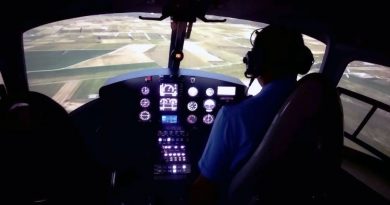
Euronaval 2024 – Thales to start SonoFlash production deliveries early in 2025
With a final set of end-to-end tests currently underway, and a full qualification achievement planned before the end of 2024, Thales is working to begin low-rate initial production (LRIP) deliveries of its SonoFlash combined active/passive sonobuoy to the French MoD’s Directorate General of Armament (DGA, Direction Générale de l’Armement), in early 2025
Following feasibility studies launched in 2016, in January 2021 Thales was awarded a contract by the DGA for the full development, qualification, and production of SonoFlash. The latter is planned to be fielded by the French Navy on board the NH90 Caïman helicopters and modernised Atlantique 2 ASuW/ASW aircraft. After LRIP deliveries, the customer will conduct demonstrations, and the first operational batch of sonobuoys for the French Navy is planned to be delivered in 2026.
Developed to meet the French Navy ASW requirements and regain a ‘sovereign’ capability for sonobuoy design and manufacture, the SonoFlash features an innovative design and advanced technologies, which according to Thales, give the new generation sonobuoy unequalled performance-to-mass ratio and performances. Current sonobuoys are either passive or active in operation. By contrast, the SonoFlash buoy offers the best of both modes by integrating a high-power, optimized low-frequency transmitter with a high-directivity passive receiver, packed into a single acoustic buoy.

This dual mode is intended to increase the tactical flexibility, also thanks to its long endurance, to reduce the overall number of sonobuoys needed in a field, and to open up opportunities for multi-static operation thanks to its compatibility with the other families of Thales sonars. Coupled with the FLASH (Folding Light Acoustic System for Helicopters) dipping sonar, for example, the SonoFlash buoy enables an aircraft to expand its coverage area and respond with greater agility to evasive manoeuvres by a submarine, according to Thales. Thanks to its digitised signal and optimal communication range, the SonoFlash buoy data can be readily exploited by any piloted or remotely piloted aircraft, naval vessel or shore centre equipped with a sonobuoy processing system. The SonoFlash processing can be conducted on existing Thales acoustic processing suite as well as on third party systems.
As anticipated, the SonoFlash was developed by Thales and is manufactured in France by a network of small and medium enterprises such as Telerad, SelhaGroup and Realmeca, ensuring a sovereign industrial capability. In addition to its national launch customer, Thales is stepping up the marketing efforts on the international arena, seeking to secure early export customers.
Photo and image courtesy Thales



